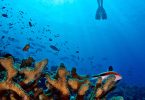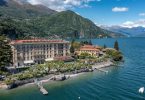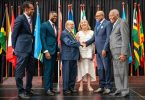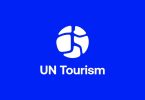The importance of travel and tourism to Santa Catarina’s economy is indisputable, yet much of the potential of this southern state of Brazil remains largely untapped. This was one of the main conclusions of an economic impact study conducted by the World Travel & Tourism Council (WTTC) on the occasion on the 9th Global Travel & Tourism Summit, currently being held in Santa Catarina’s capital, Florianópolis, from May 14-16.
“Indeed,” said Jean-Claude Baumgarten, WTTC president and CEO on launching the report, “Santa Catarina must be one of the region’s best-kept tourism secrets since few outside Latin America – or perhaps even Brazil – are aware of its unparalleled diversity in terms of landscapes, cultures, and people.”
“This is the first time that WTTC, in cooperation with our research partner Oxford Economics, has quantified the economic contribution of travel and tourism to an individual state in Brazil or Latin America,” added Geoffrey J. W. Kent, WTTC chairman, and chairman and CEO, Abercrombie & Kent, announcing the report to WTTC’s members at the Council’s Annual General Assembly. “We are particularly pleased, therefore, to present this study to the hosts of our summit – the Santa Catarina State Government, EMBRATUR, and the Brazilian Ministry of Tourism.”
THE FACTS AND FIGURES
The message from the report is clear: travel and tourism is very important to Santa Catarina, generating an estimated 12.5 percent of the state’s GDP, or R$14.8 billion (US$6.4 billion) and nearly 510,000 jobs (11.9 percent of total employment) in 2009 across the wider travel and tourism economy. Moreover, between now and 2019, its contribution is forecast to become even more significant. It should grow by 4.5 percent a year, in terms of GDP, and by 3.2 percent in number of jobs, to R$33.8 billion (US$12.8 billion) in travel and tourism economy GDP and a workforce of 696,000.
“However, despite these positive forecasts, there is no room for complacency,” warned Baumgarten. “We recognize all the steps taken and the progress made by the Santa Catarina State government, but international competition is fierce, and a concerted effort will be required by all key stakeholders for these forecasts to be achieved.
“Most importantly, the government and its public and private sector partners must ensure that travel and tourism development is sustainable – that it achieves a healthy balance between business imperatives, the protection of natural resources, and the well-being of Catarinenses,” he added.
“The rich diversity of landscapes and cultures, which is the state’s main tourism asset providing huge opportunities for growth, must be protected and preserved for generations to come.”
“We hope that by raising awareness of the enormous potential of travel and tourism in Santa Catarina,” Baumgarten added, “this report will act as a catalyst, encouraging industry and government to work together even more than they are doing today, in order to assure the necessary conditions for this potential to be realized.”
NEED FOR GREATER PRODUCT AND MARKET DIVERSIFICATION
In the report, WTTC highlighted the fact that Santa Catarina is primarily known for its beaches – a number of which rank among the best in the world. Yet it is blessed with a wealth of other attractions that could prove just as appealing, if not more so, to potential visitors. Most importantly, further development and promotion of new markets and segments could help extend the season and spread the benefits of tourism across the state.
Key to the future of Santa Catarina is how well the state government manages and aligns state resources to enhance the quality of life of all its citizens. It needs to provide education for Catarinenses, advance economic prosperity, create innovative opportunities, and maintain a safe and healthy environment. And travel and tourism can help the government and its public sector partners achieve these goals, as well as creating the underlying conditions necessary for a thriving tourism industry.
The report noted that there are a number of challenges to address if travel and tourism is to reach its enormous potential as a catalyst for future economic and social development across the whole of the state. Considerable care must also be taken to ensure that growth is sustainable – that it achieves a healthy balance between business imperatives, the protection of cultural heritage and environment, and the well-being of local communities.
INVESTMENT POTENTIAL DEPENDS ON THE DEVELOPMENT OR MORE UPSCALE PRODUCTS
What about the state’s investment potential? Over the past 20 years or more, tourism development and marketing in Santa Catarina appear to have been driven largely by the needs of the state’s mainly budget to mid-scale domestic market. And neighboring Argentines, Uruguayans, and other South Americans have also sought the same tourism products: lots of basic accommodation for lounging on beaches. This means there has been little need for investment in upscale tourism products and services, or value-added attractions which would seem expensive to the average tourist.
“This will inevitably change if Santa Catarina decides to focus more on longer-haul, higher-yield, international sources,” said Geoffrey Kent. “But the returns on investment could well prove justified in the longer term.”
For further information about the report, or for a copy of the final version, please contact either Regine Doloy, WTTC communications director or Amir Girgis, WTTC’s inhouse economist, on tel: 44 (0) 207 481 8007, or email them at [email protected] or [email protected].
NOTES ON METHODOLOGY
This new study of Santa Catarina quantifies all aspects of travel and tourism demand, from personal consumption to business purchases, capital investment, government spending, and exports. It then translates this information into economic concepts of production such as GDP and employment that can be compared against other industries and the economy as a whole to provide credible statistical information that can assist in public sector policy and business decision processes.
The study, otherwise termed a Simulated Tourism Satellite Account (TSA), uses the framework of a TSA, which is analogous to that used for the production of national income accounts. It follows the key concepts of Tourism Satellite Accounting contained in the 2008 United Nations Recommended Methodological Framework (RMF).
The RMF’s Tourism Direct Gross Domestic Product measure is broadly equivalent to the travel and tourism direct industry measures given by WTTC/Oxford Economics. Building on this direct industry measure – i.e., taking into account the value added created indirectly in the industry’s supply chain, plus investment and collective government and non-visitor export spending – one arrives at the broadest measure of the economic impact of travel and tourism, which is travel and tourism economy GDP.
Full details of the methodology used by WTTC/Oxford Economics for the Santa Catarina and other studies are available on WTTC’s website at: www.wttc.org/eng/Tourism_Research/Tourism_Economic_Research.






















